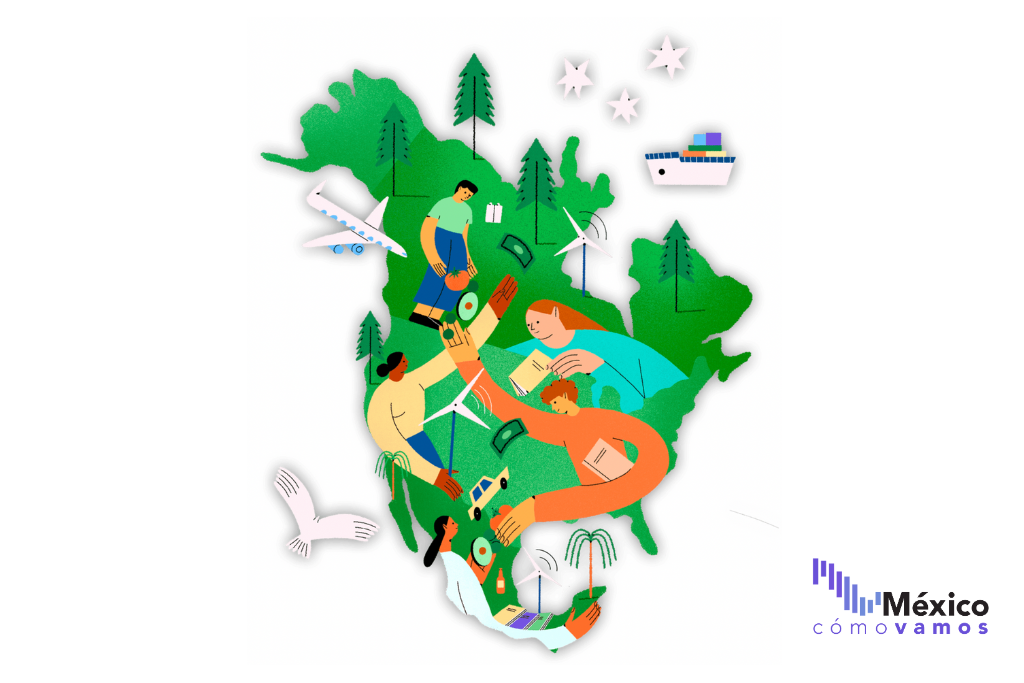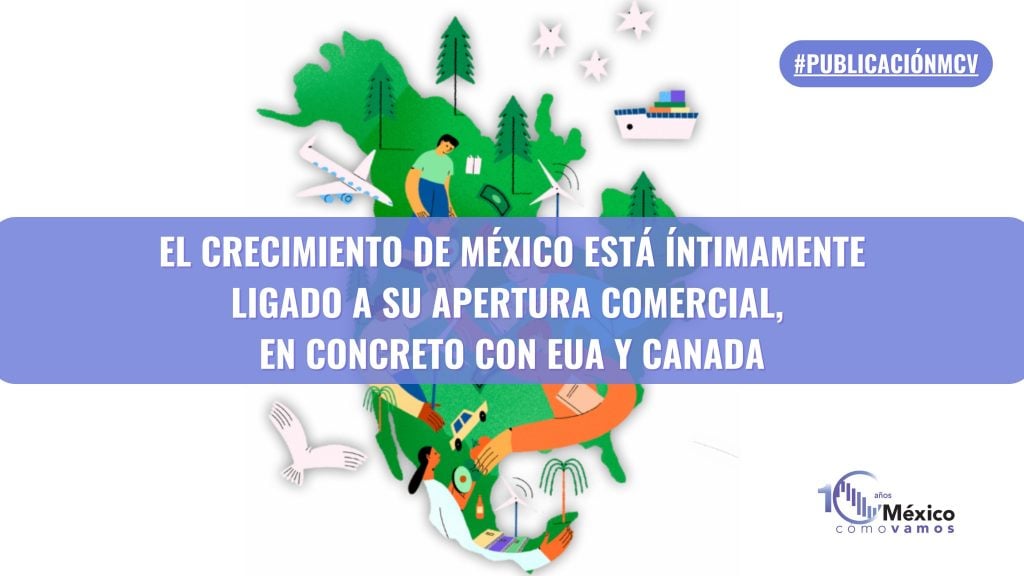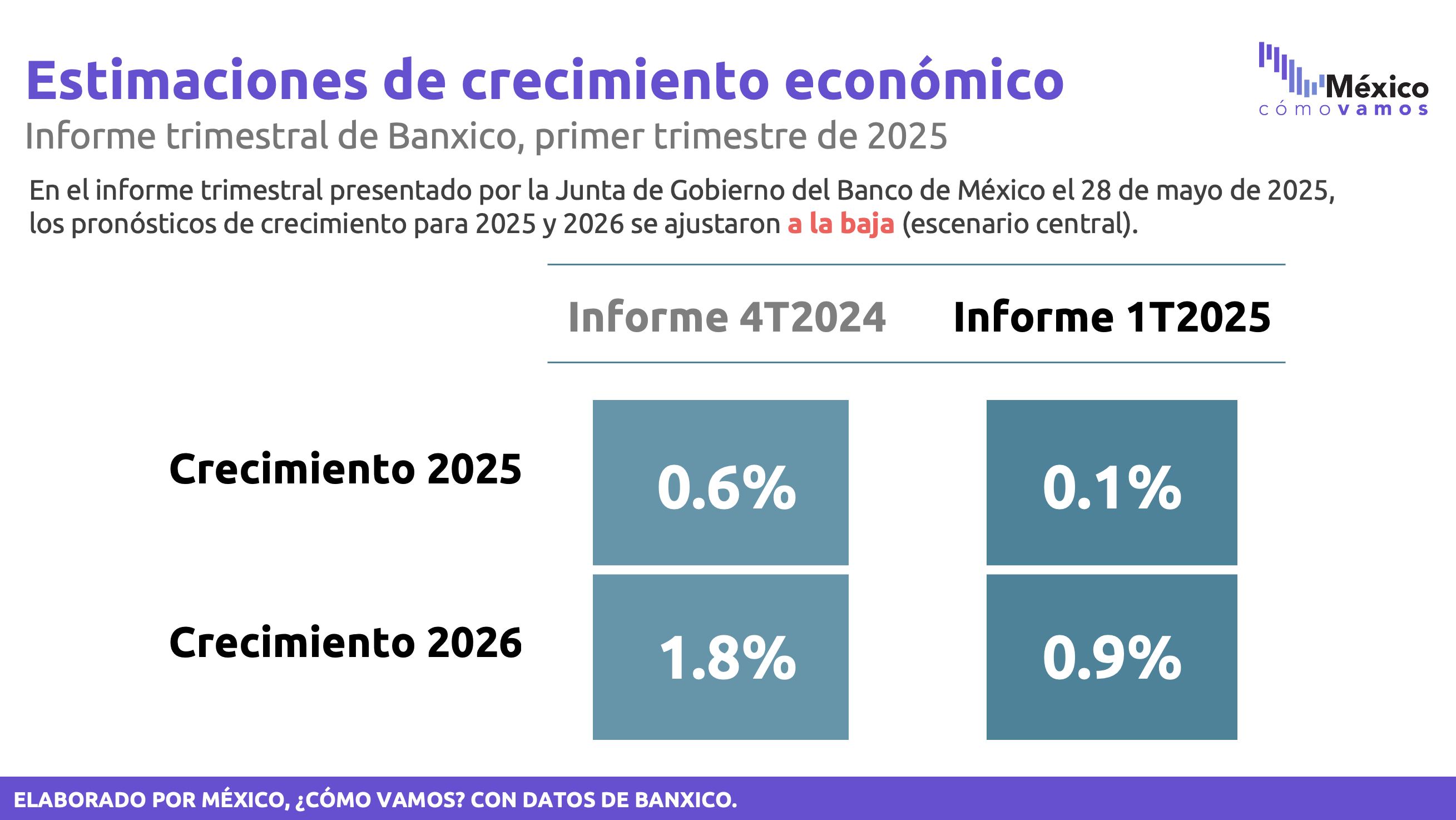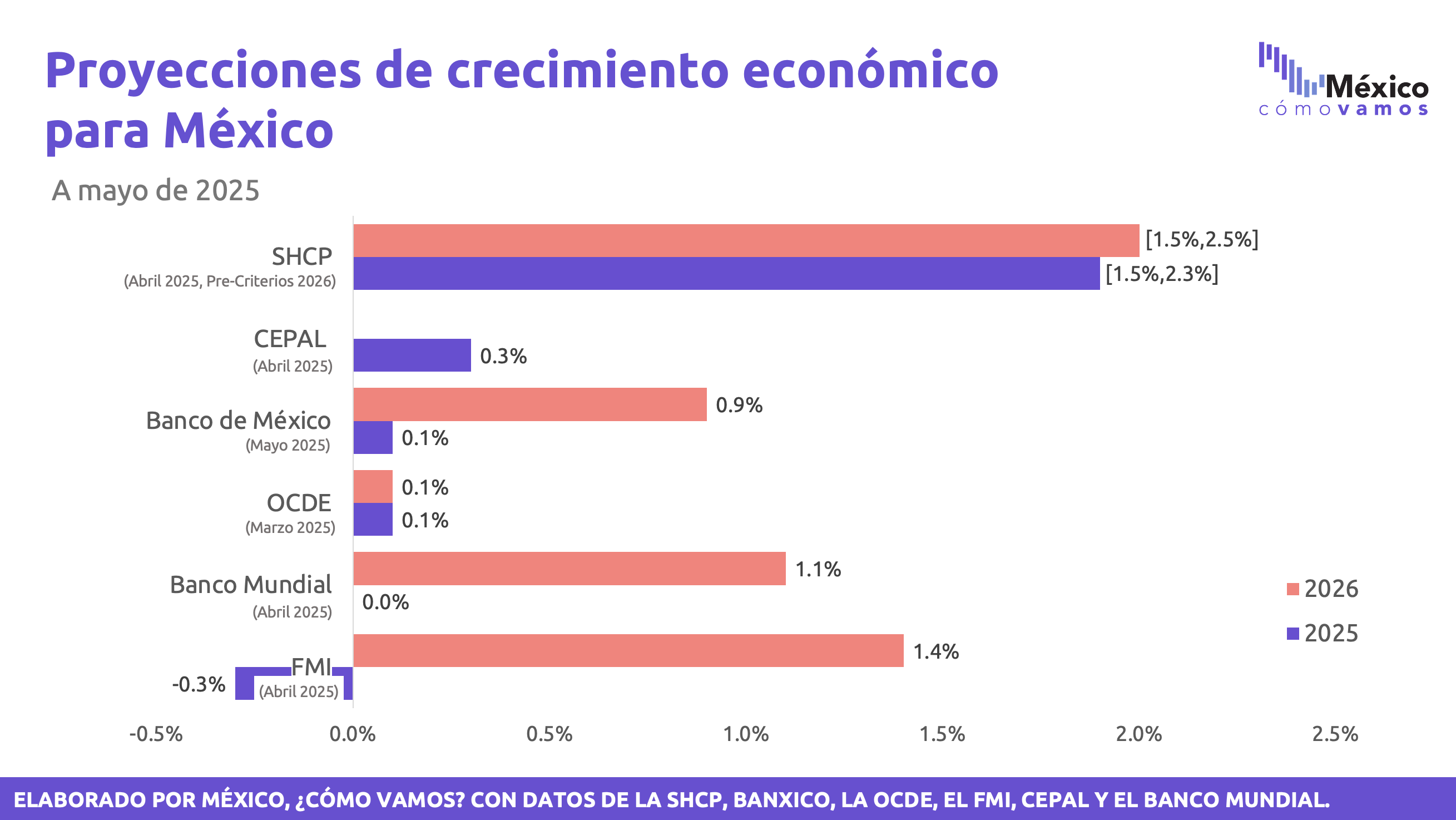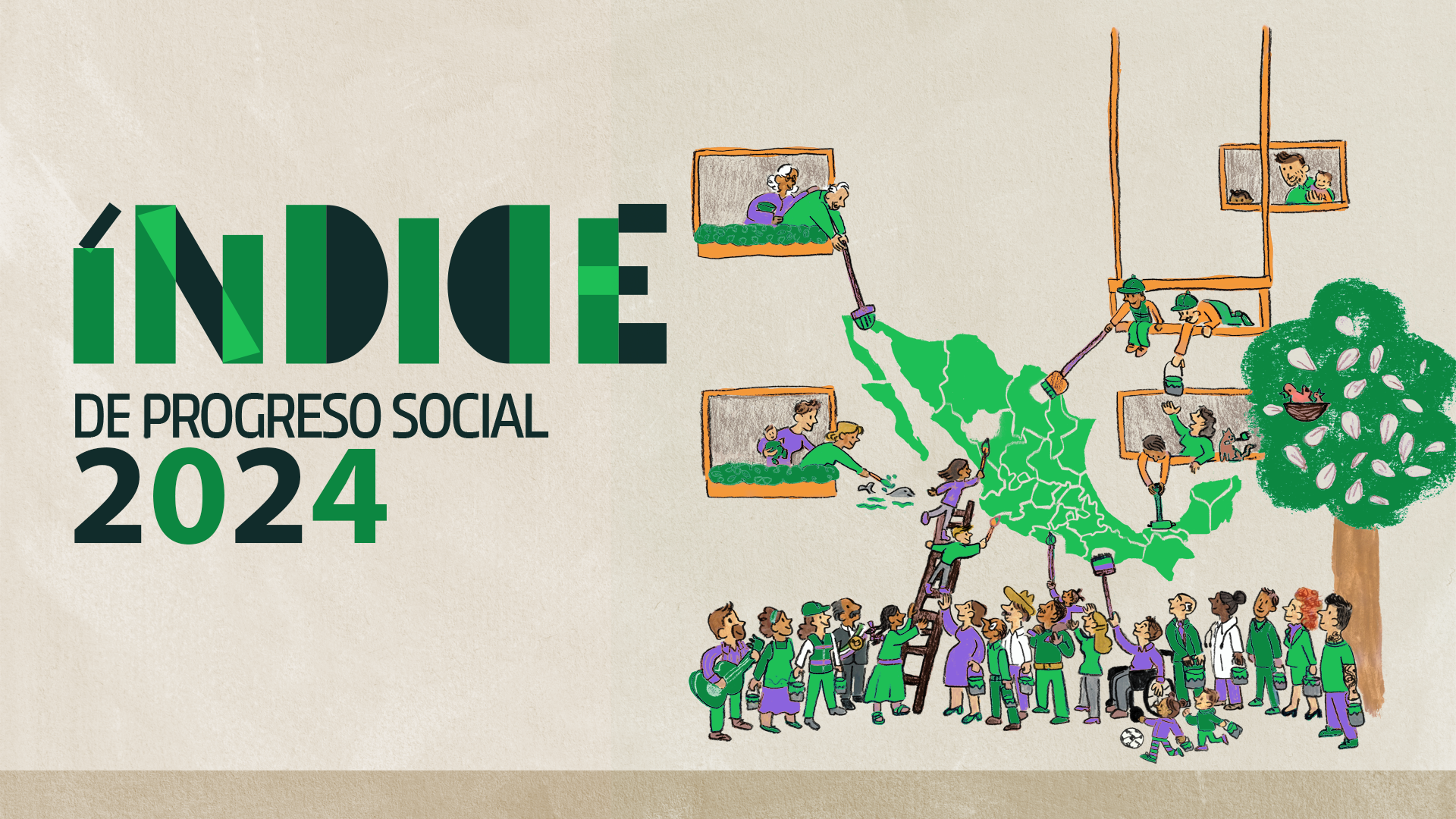- Trade integration with the world has allowed Mexico to experience sustained development over the past 40 years.
- The United States-Mexico-Canada Agreement (USMCA) plays a fundamental role in this integration, so Mexico must maintain a strategy that benefits Mexicans, especially their quality of life.
Mexico’s economic development is integrated into North America’s supply chains under the United States-Mexico-Canada Agreement (USMCA) for the following reasons:
- Exports: 84% of Mexico’s non-oil goods exports are destined for the United States (Timely estimate for the January – July 2024 Trade Balance, INEGI).
- Foreign Direct Investment (FDI): 44% of FDI in Mexico comes from the U.S. and 8% from Canada (Q2 2024 FDI, Ministry of Economy).
- Employment: Nearly a quarter of the employed population in Mexico (14.6 million people) is connected to sectors associated with trade integration, such as manufacturing, wholesale trade, and transportation and storage (Q1 2024 ENOE, INEGI).
- Remittances: 96% of the remittances received by households in Mexico come from the United States (January – June 2024 Remittance Income, Banxico).
México, ¿cómo vamos? provides timely economic information to the public and authorities so that they can make informed decisions, thereby promoting sustained and shared growth in the country.
- TRADE: WE ARE PARTNERS, NOT JUST NEIGHBORS
- Mexico is the primary trading partner of the United States and the second for Canada.
- 84% of Mexico’s non-oil exports (i.e., goods) are to the United States.
- 80% of Mexico’s light vehicle exports are destined for the United States and Canada.

- REGIONAL INTEGRATION OF NORTH AMERICA
We exchange $1.6 trillion in regional trade annually between Mexico, the United States, and Canada (2023).
The United States-Mexico-Canada Agreement (USMCA) came into effect on July 1, 2020. The USMCA replaced the North American Free Trade Agreement (NAFTA) of 1994 and modernized the trade relationship among the three countries, as it is:
✅ A unique trade instrument globally due to its trade volume, major partners, and periodic review clauses.
✅ Involves millions of jobs across North America, which generate well-being when minimum conditions are met.
✅ Provides stability, and the rule of law in the three countries allows individuals and businesses to plan and invest for the long term.
✅ Our institutions promote dialogues for a more prosperous and inclusive region.
- ORIGIN 🇺🇸 🇨🇦 OF MORE THAN HALF OF FOREIGN DIRECT INVESTMENT IN 🇲🇽 MEXICO
44% of the foreign direct investment (FDI) Mexico receives comes from the United States and 8% from Canada (as of Q2 2024).
36% of the FDI from the United States is directed towards the manufacturing sector, which holds significant weight in the Mexican economy (as of Q2 2024).
43% of Canadian FDI in Mexico is directed towards the transportation, mail, and storage sector, which represents 7.93% of the Mexican economy (as of Q2 2024).
- MILLIONS OF JOBS RELATED TO TRADE INTEGRATION
In Q1 2024, 14.6 million jobs in Mexico are involved in North America’s goods trade processes, including manufacturing, wholesale trade, as well as transportation and storage sectors. This represents nearly a quarter of the employed population in Mexico.
In recent years, Mexican workers have filled vacancies in the U.S. in sectors facing labor shortages, such as agriculture, construction, and healthcare.
The TN visa, a work visa inherited from NAFTA and established under Chapter 16 of the USMCA, allows business people to enter the United States. In recent years, this visa, along with the H-2A visa, has seen the highest growth rates in issuance, promoting a growing, legally controlled entry of professionals and facilitating labor integration in the region.


- SHARED PROSPERITY IN THE REGION
Shared prosperity is the result of more than 40 years of integration.
North American integration goes beyond trade; it is reflected in the quality of life at the local level. The southern United States, northern Mexico, the Yucatán and Baja California peninsulas, Western Mexico, and Mexico City share a similar standard of living.
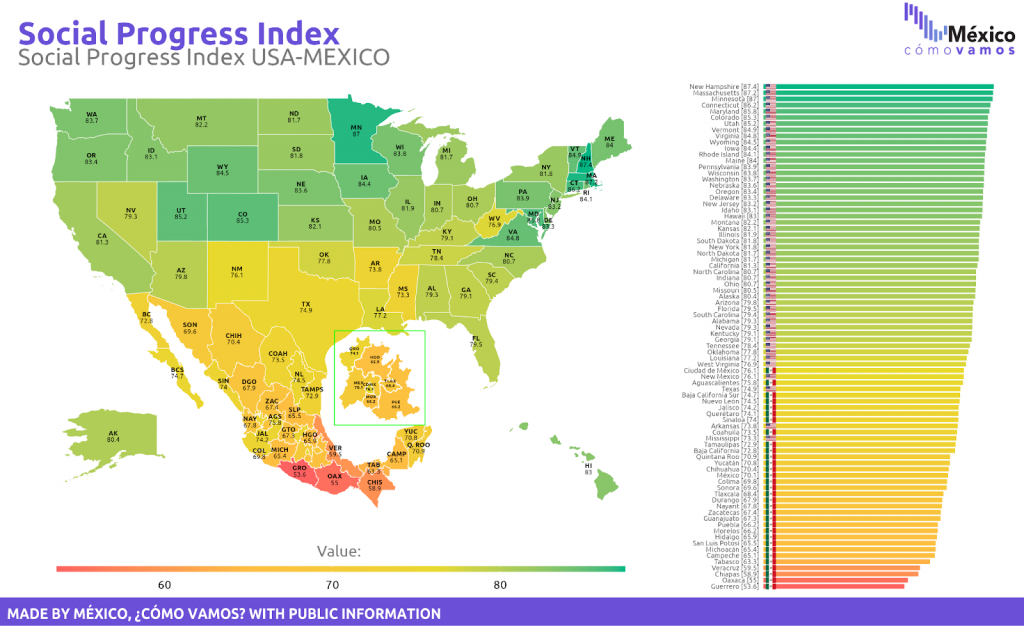
The close relationship between Mexico and the United States goes beyond being primary trading partners; it suggests a socioeconomic convergence, particularly evident in the southern U.S. states and northern Mexico, in key areas for social progress such as education and health.
North America’s success story presents an opportunity to reverse the lagging development in the southern-southeastern region and promote improvements in social progress. The goal is to create conditions that attract new investments, which in turn will strengthen the labor market and improve the quality of life for the population.
- REMITTANCES FOR THE LOWEST INCOME HOUSEHOLDS
Mexico received a record amount of remittances, totaling $6.213 billion, with an annual increase of 11.3% (June 2024). Of these, 96% come from the United States.
The majority of those receiving remittances live in low-income households.


- BENEFITS FOR FAMILIES’ BUDGETS
Thanks to trade integration, people in Mexico can buy more goods and access services at better prices.
This isn’t just because economic competition increases with trade openness, but also because we can purchase durable goods —such as phones, computers, better audio and television technology, and a wider range of services like streaming platforms— at lower prices than we could without trade openness.
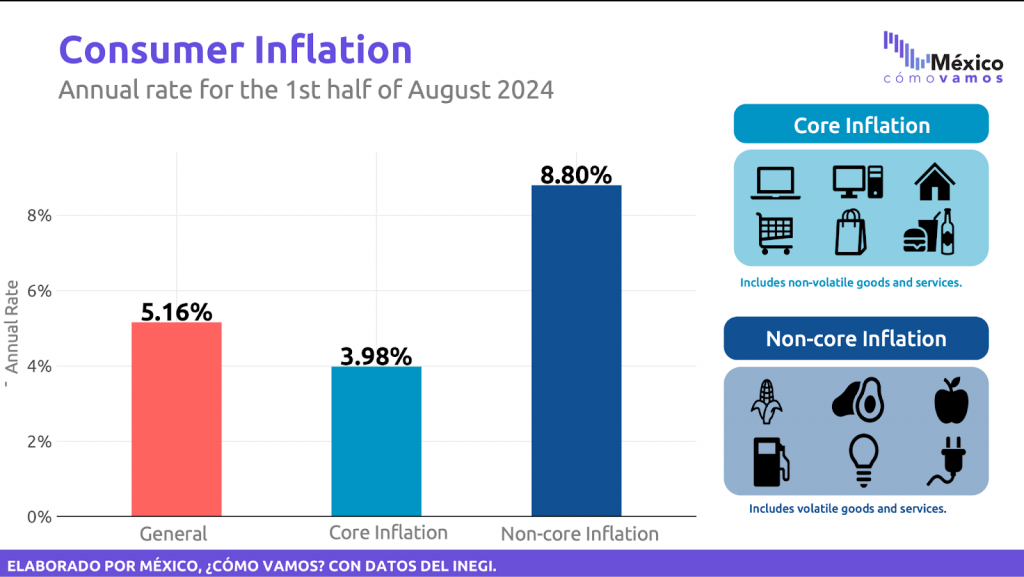
Trade integration also enables the distribution channels for our products, including agricultural goods, to reach other markets, as containers travel full both ways, expanding economic activity in Mexico.
Without trade agreements, consumer inflation would be higher because products imported from abroad or assembled in Mexico with imported inputs would be much more expensive.
- CHALLENGES REMAIN, BUT IT’S A TIME OF OPPORTUNITY 🇲🇽
Significant challenges remain, such as integrating the southern-southeastern region of Mexico into North America’s supply chains, investing in logistics infrastructure and technology to streamline transportation, efficiency, and communications, and ensuring road safety, as 65% of exports are transported by road.
However, integration with the world has allowed Mexico to achieve sustained development over the past 40 years.
Mexico must capitalize on its advantages and the current economic climate in terms of:
✅ Economic complementarity 🇲🇽🇺🇸🇨🇦 in trade and the competencies of its human capital.
✅ A young and dynamic demographic that holds enormous potential: workforce and talent. By 2050, the median age in North America 🇲🇽🇺🇸🇨🇦 will be 42, compared to 52 in 🇨🇳 China and 46 in 🇪🇺 Europe. (Source: Our World in Data).
✅ The future economy is digital, but geographical proximity will always be an advantage for integration.
✅ The USMCA and previous trade integration mechanisms already include some tools for labor mobility.
The United States-Mexico-Canada Agreement (USMCA) plays a fundamental role in integration, so Mexico must maintain a strategy that benefits the country and improves the quality of life for its people.
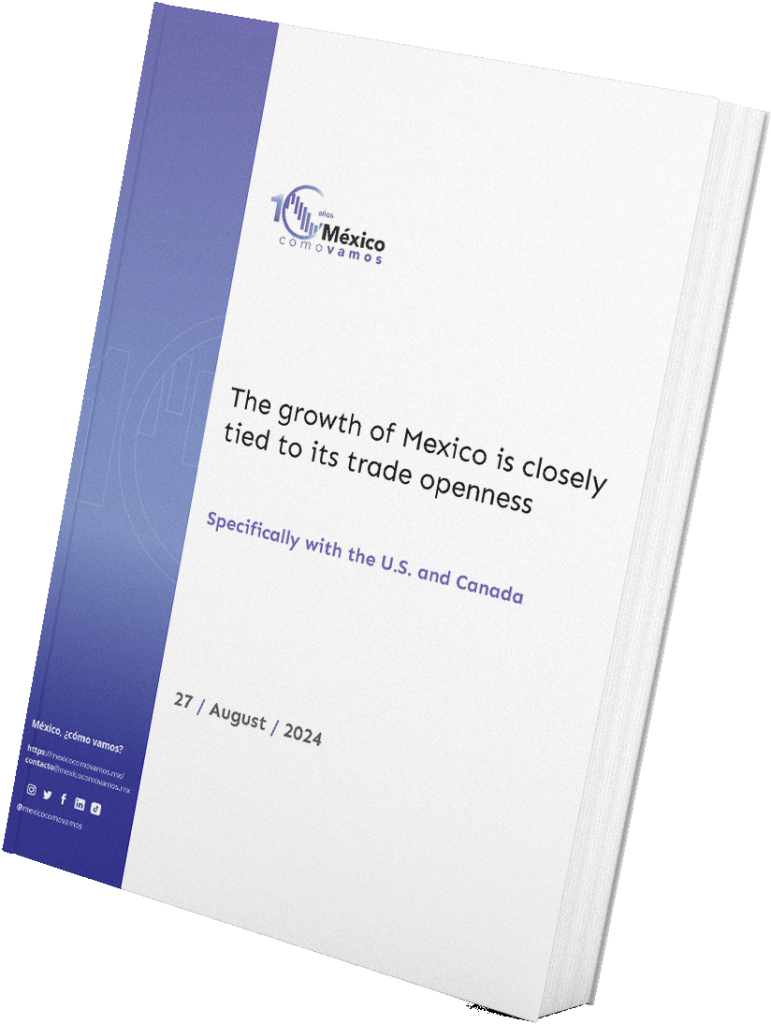
Would you like to learn more about North American integration, the map of shared prosperity, and the integration of human capital through the USMCA?
Explore our specialized sites:
Contact us at [email protected]
